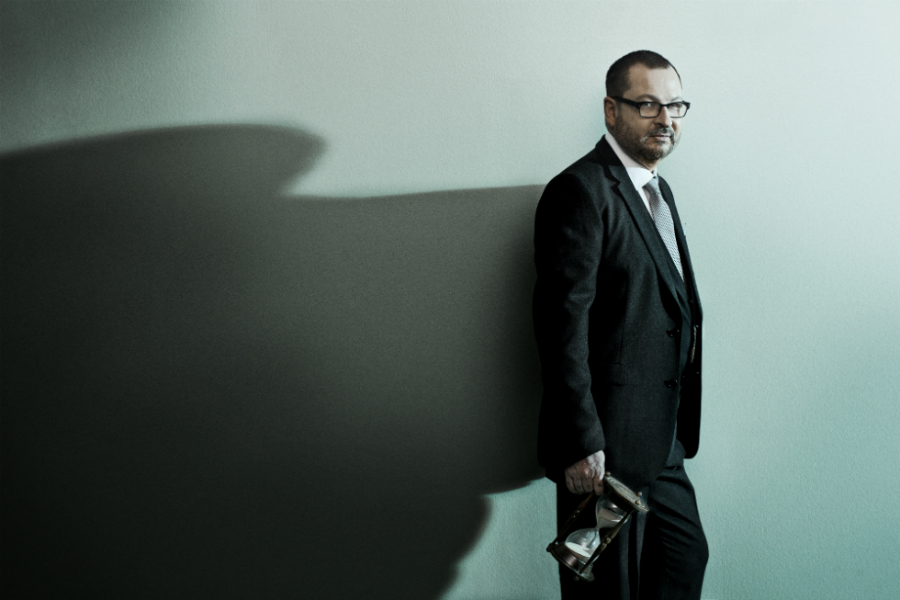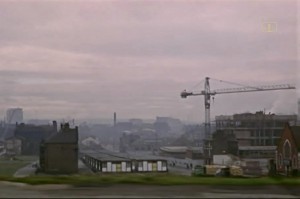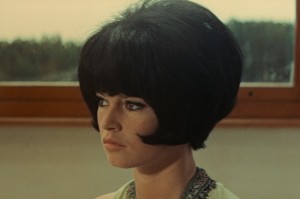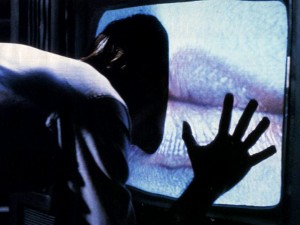In Profile: Lars von Trier

Infamous director Lars von Trier is back with “the least-sexy 4 hour portrayal of sex you’ll ever see.” Frederick Johnson looks at a complex man who loves to divide his audience…
It’s easy to get swept-up in the negative comments that orbit Lars von Trier. He is targeted frequently as a pornographer and misogynist, and has been labelled as pretentious, perverted, and even a fascist. And to be fair, Von Trier doesn’t often help himself out; he famously stirred up a whole load of controversy at the Melancholia (2011) press conference, including sympathising with the Nazis, and stating his intention to film Charlotte Gainsburg and Kirsten Dunst having some “very, very unpleasant sex”.
These comments may put some cinema-goers off, but I’d argue to look past his odd humour; perhaps all Von Trier’s behaviour really exposes is a complex and subtly ironic man aware (troublesomely so) of his own intelligence and his own unique stance.
Von Trier has got a lot of a press attention lately for his upcoming release Nymphomaniac, a two-part drama that promises to be the least-sexy 4 hour portrayal of sex you’ll ever see (certainly if his previous cinematography is any indicator – one shudders to recall Dunst’s sad fling in Melancholia, and the less said about Gainsbourg and Willem Defoe’s sex in Antichrist (2009) the better).
This will certainly (and indeed already has) result in an explosion of outraged traditionalists who view this sudden corruption of cinema at the hands of this dastardly Dane as akin to a social apocalypse, and insist that there is indeed something rotten in the state of Denmark. Admittedly Nymphomaniac displays the dark side of sexuality a lot more openly and graphically than even his other films (Antichrist aside, perhaps), and at a distance it could just be seen as pornographic sensationalism.
But those who have fully engaged with Von Trier’s back catalogue will suspect otherwise, and maintain faith. I use the word ‘engage’ deliberately; Von Trier’s work comes under fire frequently as (as a quick trip to read user reviews on IMDB will testify) “idiotic”, “pretentious”, “failed art-house cinema” and “made for pseudo-intellectuals”, amongst other comments. While these reviews probably tell you more about the reviewer than Von Trier, they do make it clear that his films are not for everyone.
Indeed, his work is not entertaining in the conventional manner; the drama tends to be slow and internal, and thus an audience is required to invest a certain amount of thought into attempting to penetrate the implications of the action. If you’re having a relaxing Friday night wind-down, Von Trier will perhaps not be appropriate. It’d also be fair to say that you probably get as much out of his films as you put in.
Most recently, I watched Dogville (2003), an exploration of human cruelty and a criticism of American colonialism and imperialism that takes place on an extremely minimalist set that is, for the most part, a chalk drawing on a dark stage. The film’s protagonist Grace (Nicole Kidman) finds herself set against the American ideal of self-reliance, and the plague of arrogance emerges as one of the film’s central themes. This is expressed in the film by Grace finding herself rejected from doing work that people ‘need’ doing – instead she must appeal to complete tasks the inhabitants ‘want’ doing so as to avoid contradicting the proud pioneer attitudes of Dogville.
The film’s final scenes, after watching Grace endure throughout, are both grotesque and just; what begins as a perhaps valid cull (particularly after a conversation late in the film about codes of ethics and arrogance) swiftly becomes a horrific display of graphic violence, and the audience, like Grace, is left shocked. An indication of the complex web of morality in Dogville comes when one learns that the film is allegedly one of notorious Norwegian murderer Anders Breivik’s favourite films.
Indeed, Von Trier’s work very rarely conjures pleasant feelings, but instead leaves an engaged audience uncomfortable, sickened, and angry (albeit not without Edgar Allen Poe’s sense of “half pleasurable, because poetic, sentiment”). This is perhaps why his films are so often disregarded by unusually enraged viewers and critics; it seems Von Trier, whether you adore or despise him, never fails to kick up a fuss.
One thing that most people seem to agree with when it comes to Von Trier, however, is the beauty of his cinematography; he brings gorgeous, artistic shots to even the most seemingly mundane or bleak actions. I’m thinking particularly of the opening sequence to Melancholia, where Dunst stands staring whilst dead birds fall slowly around her. Antichrist too, known primarily for its sexually-disturbing scenes, is completely littered with moments of spine-tingling beauty: Defoe stands in a forest clearing gazing morosely as acorns tumble from the sky around him; Gainsbourg glides through a two-dimensional forest scene like a serene ghost; Defoe, at the film’s ending, wanders through the bleak woodland as it transforms into contorted and curled female bodies.
These moments of aesthetic wonder are not simply for the sake of beauty; as with every other icon, motif, or sequence in Von Trier’s work, they hide oceans of meaning, insight, and, inevitably, misery. It is cinema at its finest, and for those open-minded enough to look past the sensationalism, 2014’s Nymphomaniac promises to bring something truly special to Von Trier’s already impressive back catalogue.
Frederick Johnson
On general release from Friday 21 February 2014





